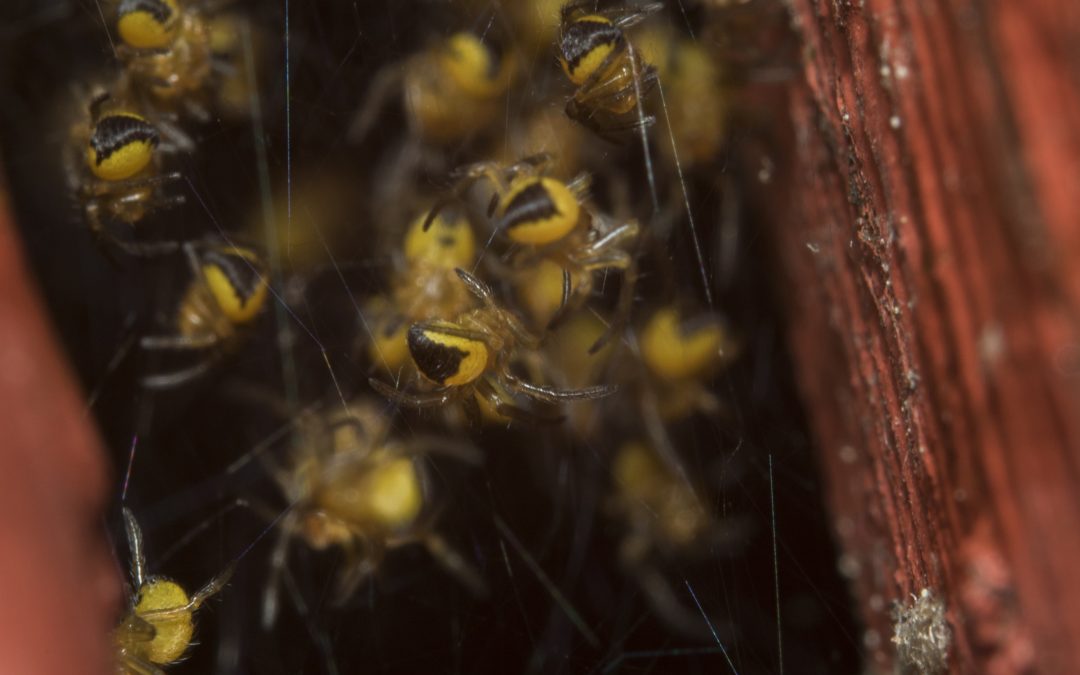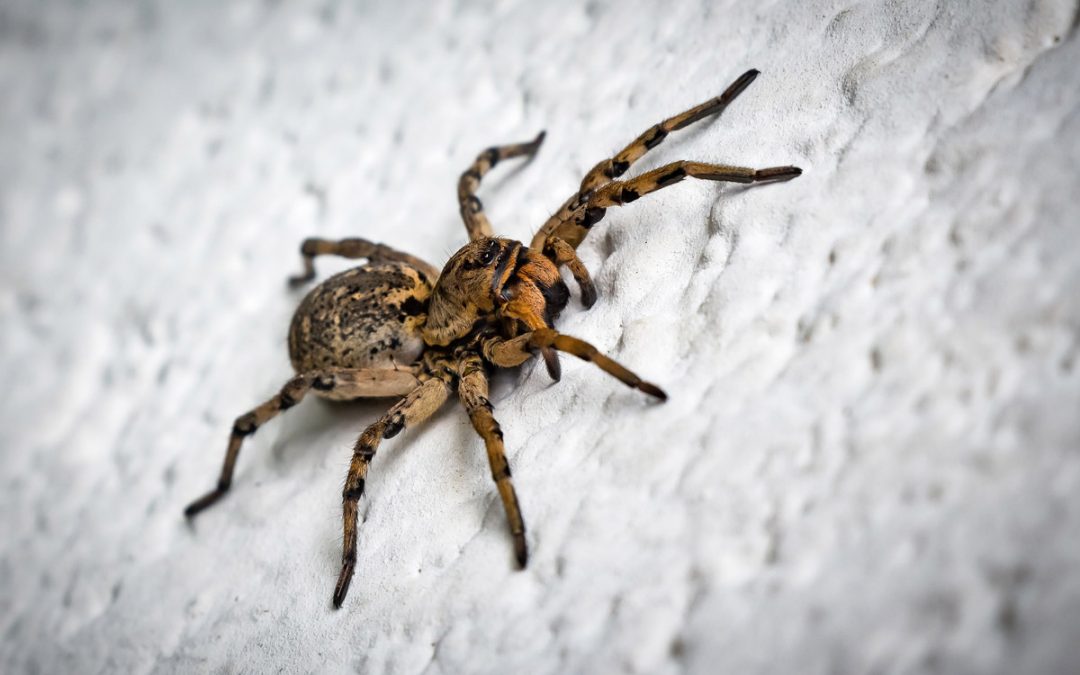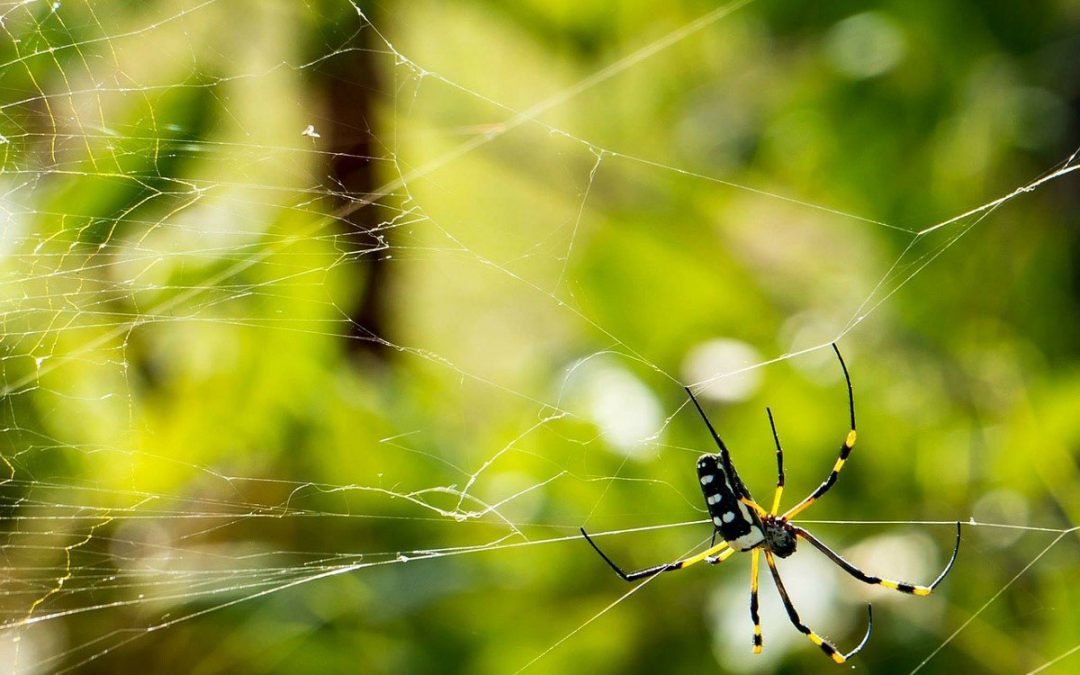
HOW TO KEEP SPIDERS OUT OF THE HOUSE
With their peak season fast approaching in Adelaide, spiders are busy looking for food and places to breed, with your house ticking a lot of boxes! If you’ve been wondering how to keep spiders out of your house, this guide will walk you through both natural and professional solutions. Learn more in our Hivemind blog.
What questions will this article answer?
Why are spiders attracted to my house?
They’re looking for food, warmth, shelter and quiet hiding spots to nest and breed.
Preventing access
We recommend inspecting your home regularly to identify and seal off potential entry points.
Keep your house clean
We suggest thoroughly dusting, vacuuming, sweeping, wiping and mopping to remove spider webs and egg sacs.
Maintain your yard
Mow your lawn regularly, remove piles of vegetation from your yard and keep plants trimmed away from your home.
DIY natural repellents
You can make sprays using crushed garlic cloves, white vinegar and essential oils mixed with water.
Use spider traps
Ideal for physically removing spiders from your space, there are several types of spider traps available on the market.
How to keep spiders out of the house for good with professional spider control
At Allstate, our safe spider control treatments include aerosol sprays, barrier sprays and control dust.
For reliable and safe spider treatment, choose Allstate
Available 24/7 to all suburbs of Adelaide for expert advice, our highly skilled team offers tailored and non-toxic spider management solutions.
Why are spiders attracted to your house (and how to keep them out)?
You might spot these 8-legged insects out and about all year round, but the warmer months of October through to April mark the official spider season, which peaks in December. During this period, they’ll be on the hunt for food and quiet places to nest, breed and lay eggs.
If your home is buzzing with other pests such as mosquitoes, moths and flies, you’ll be more likely to draw in hordes of hungry spiders.
Come winter, like many other pests, spiders will naturally be drawn to the warmth and shelter of your home, where many will bunker down and enter a hibernation-like state.
However, you’ll also find some spiders seeking refuge outdoors during winter. They could be lurking underneath rocks or piles of vegetation, including leaf litter in your backyard.
Preventing access: how to keep spiders out of your house
With their small size and nimble bodies, spiders are masters of finding their way into the most unlikely of spaces. That’s why one of the most effective ways to keep spiders out of the house is to stop them getting in altogether. Whether it’s a small crack, gap or crevice within the walls, foundations or utility line openings, it doesn’t take much for spiders to come inside and cause a full-blown outbreak.
So if you’ve been wondering how to keep spiders out of your house, we recommend inspecting your home regularly to identify and seal off potential entry points. Consider taking these following simple steps:
- Install door sweeps and mesh screens, or weather-stripping where appropriate
- Repair or replace damaged mesh screens
- Check that mesh screens covering doors and windows are intact
- Caulk gaps and cracks
- Keep all windows and doors closed
- Thoroughly inspect items that have been kept outside before bringing them into your home, including camping gear, boxes, furniture, pot plants and firewood
- Sprinkle diatomaceous earth into hard-to-reach places around the perimeter of your home to reduce the number of secret passages for tiny spiders to crawl inside
Stop spiders from venturing indoors, get fast advice
 or
or
Keep your house clean to keep spiders out
With a knack for finding quiet, undisturbed places to breed and nest, spiders are commonly found in storage areas, attics, garages, closets, spare rooms, basements and sheds. For many of us, it can be easy to forget cleaning these less frequented places when going about our household chores.
Regular cleaning doesn’t just make your home more comfortable, it also helps keep spiders out of your house by removing webs, egg sacs and hiding spots.
At Allstate, we suggest thoroughly dusting, vacuuming, sweeping, wiping and mopping to remove spider webs and egg sacs when completing your list of chores. Be sure to check behind and underneath furniture and appliances as well.
Regular decluttering of your storage areas is also essential to remove spider hiding spots.
Maintain your yard
Some species of spiders, such as garden orb weavers, live and breed outdoors. You’ll know that they’re around because their cobwebs will be visible on tree branches, bushes, shrubs, along your fence or even in long grass. During the daytime, they’ll hide underground or underneath rocks, piles or leaf litter or compost. Here are some handy hints to keep outdoor spiders at bay:
- Regularly mow your lawn and dispose of grass clippings
- Remove piles of leaf litter and vegetation and keep woodpiles away from your house
- Always keep compost covered and sealed tightly in sturdy bins
- Keeping plants well-maintained, pruned and trimmed away from your home to prevent access.
Maintaining your yard is another simple way to keep spiders out of the house, as it removes the outdoor shelters they rely on.
DIY natural repellents
With sensory organs located on their legs, spiders are highly sensitive to strong smells. If you’d prefer a natural approach, there are plenty of household items that can help keep spiders out of the house without harsh chemicals. Here are some common aromatic household items that can act as effective spider deterrents:
Garlic
Crushed fresh garlic has a pungent, distinct smell that is very off-putting to spiders. It can be mixed into water to form a potent solution that can be sprayed directly onto surfaces frequented by spiders. It is ideal to use indoors as it is less corrosive than vinegar. Apply liberally to floors, shelves, inside cupboards, as well as skirting boards and walls.
White vinegar
Containing acetic acid that acts as both a disinfectant and deterrent, white vinegar doesn’t just have an unpleasant smell and taste to spiders. It can remove spider pheromones and damage their delicate exoskeletons. Mix vinegar with water in a spray bottle and apply it to areas that you want to keep spiders away from, such as garages, sheds and other outdoor areas.
Essential oils
Although they can smell pleasant to humans, essential oils are despised by many insects, including spiders. Infuse a few drops of citrus, tea tree or peppermint essential oil with water to form a powerful spider deterring spray and apply it to spider-prone areas indoors and outdoors.
Plants
Lavender, eucalyptus, rosemary and mint emit a strong odour which overwhelms a spider’s olfactory sensors. You can keep these in your yard as well as in potted form to move around areas that are high in spider activity.
Sick of seeing messy cobwebs everywhere? Speak to an expert today
 or
or
Use spider traps
How to keep spiders out of the house for good with professional spider control
Although DIY spider repellents can work well for short term spider prevention, most are simply not potent enough to combat a more severe outbreak. You’re far better off seeking professional help from qualified pest control technicians.
At Allstate, our spider management program begins with a thorough inspection of your property to locate the source of the problem. We’ll then come up with a targeted treatment plan to combat the outbreak.
We’ll then use a combination of pet-, child- and environmentally friendly spider control treatments including aerosol sprays, barrier sprays and control dust to make sure that your home stays spider-free for good.
For reliable and safe spider treatment, choose Allstate
Coming into spring, the last thing that you need to worry about is frustrating questions like “how to keep spiders out of my house?”.
With Allstate here to help, you’ll be able to spend your time enjoying the sunny weather with your family and friends instead.
Since 1986, we’ve stopped thousands of pest outbreaks from wreaking havoc in homes and businesses across all suburbs of Adelaide. Available 24/7, our pest control technicians are fully equipped to tackle all types of spider infestations using modern and innovative treatments which are nontoxic towards the health and wellbeing of your family.
All our services are covered by competitive warranties and eligible for payment plans where needed, so you can do away with pests for good, sooner rather than later.





